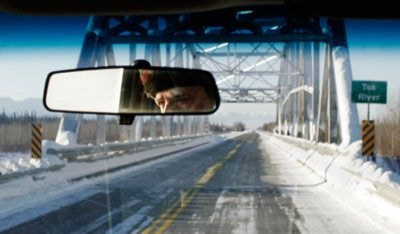When Selwyn Resources Limited envisioned its mine at Howard’s Pass, the Vancouver-based company knew the rock formation’s enormous size could mean a more visible environmental impact.
So they decided to go green from the get-go.
In return, the company has been awarded the 2008 Robert E. Leckie award for reclamation projects in quartz mining.
Ross Mining was awarded the same award in placer mining.
“If we look at this project in 10 years time or 20 years, we will have an operating mine in the site,” said Justin Himmelright, vice-president of environment and community affairs.
“So we have the opportunity in the exploration process to test and experiment to see what works and what doesn’t,” he said.
The company currently operates a series of exploration camps at Howard’s Past in the eastern Yukon.
The camps consist of diamond drilling pads to cut into the rock and unearth zinc and lead samples.
“We also have a road network and trail network to our various drill pads,” said Himmelright.
“The main focus of reclamation is dealing with those areas of road trails, drill pads and camp sites.”
The reclamation first requires planting willows from the area.
“We’re taking willow cuttings and planting from the area. That has had varied success,” said Himmelright.
Selwyn has had better luck planting grass that grows in the area for when mining operations eventually slow down.
“So it’s all native species that are locally derived,” he said.
The other major concern is erosion and earth damage.
“We will hand armour that and hand contour it too,” said Himmelright.
That means moving rocks to stabilize certain regions were land might be loose.
“You’re just using rocks you can move by hand basically,” he said.
The reclamation projects are part of the company’s environmental and socioeconomic policy.
“That policy was created and enacted concurrent with the creation of the company,” said Himmelright.
“It’s part of our overall makeup,” he said.
The size of the project was the main driver in instituting the policy, he said.
“We are preparing the project and the company to be a major player in the Yukon and certainly a large-scale mineral resource on the world stage,” he said.
The policy matches the plans of established mining operations, he said.
“We are modelling ourselves on some of the large mining players,” he said.
The exploration stage has a small impact on the environment, but it gives a chance for the company to prepare for the larger operations.
“With diamond drilling it’s a small setup, relatively speaking, that is run by two people,” said Himmelright.
“There’s helicopter-supported drilling and dozer-supported drilling. They have a varying degree of enforcement impact.”
The hole itself is not a concern, he said.
“What you have at the end of the day is a hole that is two and a half to three inches in diameter,” he said.
These holes are capped but do not pose an environmental threat in themselves.
It’s the drill pads that tear down vegetation.
“If you have a helicopter, there’s no ground leveling. You build a level platform out of timbers,” he said.
“At the end of the day you want to recycle the platform,” he said.
“So all you’re left with is a small area where the vegetation has been used.”
The bulldozer-supported drill pads have a bigger impact and require more vegetation reclamation.
The drills use water to lubricate the drilling process.
“They force water down those holes as they are drilling. The water that comes out of the hole that is used to lubricate has some additive used to stabilize the rock walls and to do a few critical functions for the drilling operation.”
Those additives are safe for the environment and have negligible toxicity levels, he said.
The water-additive mix is put into a natural or manmade pool nearby.
“That water goes into the groundwater table,” he said.
What’s left is a black or greyish material in the pool and those pools are then capped.
Taking lead and zinc out of the ground and putting it in pools does not pose a threat to the environment, he said.
“If you consider the fact that we’re drilling in an area where the entire underlying rock is lead and zinc, the material that you’re moving is the same as in the environment,” he said, “There will be lead and zinc in the underground water.”
“You’re not introducing anything and you’re not concentrating everything.”
Selwyn is looking forward to implementing its socioeconomic policy.
“The full-scale benefit (of the mining) will be realized by the local communities in the Yukon,” said Himmelright.
“We’re going to have big effect on the economy and ripple effects down the line,” he said. “Those will be in increasing focus.”
Ross Mining was rewarded for its reclamation work in Dominion Creek, said a press release issued by the Department of Mines.
It also got a pat on the back for developing an ethical gold certification for the company.
They could not be reached for comment.
Robert E. Leckie was a Mayo mining inspector who devoted his career to developing environmentally safe mining practices. Leckie passed away in 1999 and the award began being handed out the same year.
The awards are given as part of the 2008 Geoscience Forum, which ran this week at the High Country Inn.
Both Selwyn and Ross Mining received honourable mentions last year.
Contact James Munson at jamesm@yukon-news.com.
